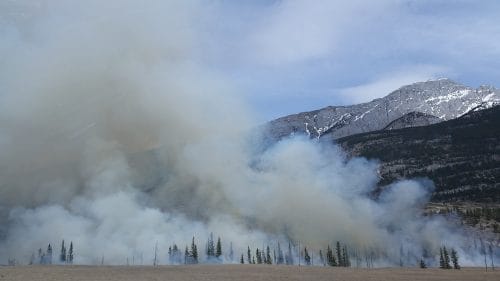Glossary of Weather Terms
From bomb cyclones and storm surges to snow squalls and atmospheric rivers, there are many weather-related terms and phrases that can come up throughout the year.
Despite their popularity on the news and in conversation, it can be difficult to keep up with what these terms really mean.
We’ve put together a glossary of some of the most common weather-related phrases to help people understand what exactly these terms mean.
Winter Weather Terms
Here are some commonly used winter weather terms. Additionally, learn how to prepare and protect your home on our winter storm preparedness page.
What is a polar vortex?
The polar vortex is a large area of low pressure and cold air that circulates counter-clockwise as it surrounds the Earth’s north and south poles. The polar vortex exists all year long, weakening in the summer and strengthening in the winter months. In the northern hemisphere, during winter, the polar vortex expands, sending cold air south with the jet stream. The polar vortex’s circulation can also be disrupted or “knocked off kilter” by other weather and atmospheric events or conditions, which can result in large bursts of arctic air throughout the northern hemisphere.
What is a snow squall?
A snow squall is a sudden and intense, but limited in duration and location, moderate to heavy snowfall accompanied by heavy winds. Snow squalls are sometimes referred to as whiteouts, and traveling in them can be hazardous. While snow squalls can produce heavy snowfall, snow accumulation may or may not be significant.
What is an atmospheric river?
An atmospheric river is a long narrow corridor in the sky that is full of concentrated water vapor. Their columns move with the weather, and when they make landfall, they typically release their moisture which results in rain or snow. Although some atmospheric rivers bring excessive rain or snow, most are beneficial, contributing to the water supply in certain regions. Other names for atmospheric rivers include tropical plume, moisture plume, tropical connection, cloud band, and water vapor surge.
Storm Terms
Storms can vary greatly in intensity and damage. Discover some of the most common storm terms, as well as tips for preparing your property for storm and how to recover from storm and flood damage.
What is a bomb cyclone?
A bomb cyclone, also known as bombogenesis, occurs when a cyclone (non-tropical storm or hurricane) intensifies rapidly within a 24-hour period. The intensity of the cyclone is measured by the drop in pressure. If the pressure drops quickly enough within a 24-hour period, a bomb cyclone occurs, which can result in heavy winds, heavy rainfall, or blizzard conditions.
What is a storm surge?
A storm surge–also known as a storm flood, tidal surge, or storm tide–occurs when the atmospheric pressure changes due to a storm system, and the sea level rises above normal tide levels. Most often, you hear about storm surges when hurricanes or tropical storms make landfall. This can result in flooding and severe damage to coastal communities. Despite their similarities to tsunamis, storm surges are classified by rising water and do not include waves.
What is an electrical storm?
An electrical storm, also known as a thunderstorm or lightning storm, is a storm characterized by the presence of lightning. Electrical storms can cause severe damage to buildings and infrastructure. Additionally, lightning from electrical storms can be dangerous to people caught outside while the storm is occurring.
.jpg)


